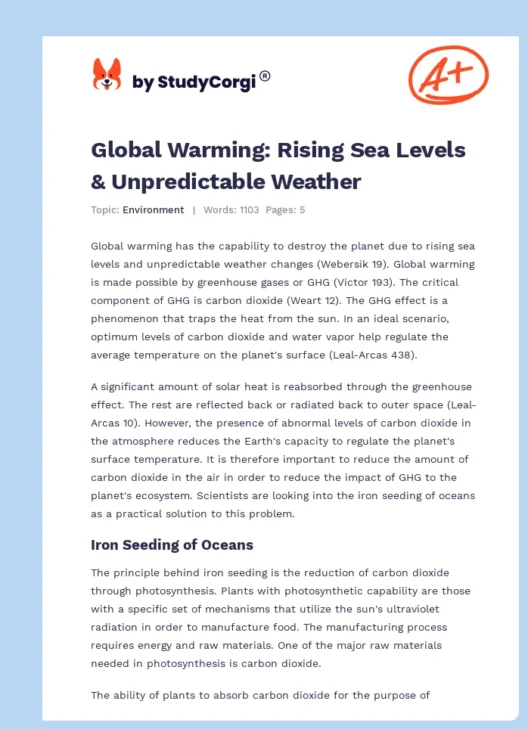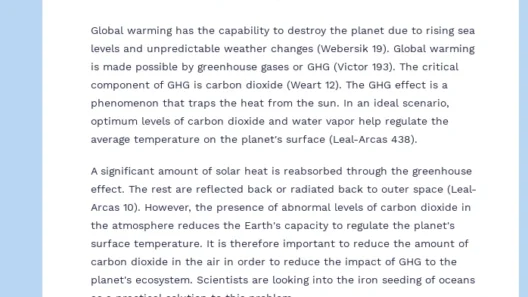In recent years, the world has witnessed a growing concern regarding climate change and its increasingly devastating effects on our planet. As glaciers melt, forests burn, and coastal cities brace for rising sea levels, it is imperative to seek innovative solutions to combat this crisis. One area that shows immense promise is artificial intelligence (AI). This technology is not merely a trend; it is rapidly becoming an invaluable ally in addressing global warming. To fully grasp its potential, one must examine several crucial dimensions where AI can catalyze change.
First and foremost, AI excels in data analysis. Climate change involves a complex interplay of variables, from greenhouse gas emissions to deforestation rates. Traditional methods of data collection often struggle to keep pace with the sheer volume of information generated daily. Here, AI-driven analytics shine. Machine learning algorithms can sift through massive datasets from satellites, weather stations, and sensors in real time, extracting actionable insights. This allows scientists to model climate scenarios with increased accuracy, thereby providing policymakers with robust forecasts to inform their strategies.
Beyond mere data analysis, AI also plays a pivotal role in optimizing energy consumption. The energy sector is one of the largest contributors to greenhouse gas emissions globally. By employing AI to manage electricity loads and optimize renewable energy resources, we can significantly reduce emissions. Smart grids, powered by AI, facilitate real-time monitoring and can adjust energy distribution based on demand fluctuations. In doing so, they enhance efficiency and provide a smoother integration of intermittent energy sources like solar and wind. Moreover, predictive maintenance, enabled by AI, can foresee equipment failures in renewable energy installations, minimizing downtime and maximizing output.
Another fascinating aspect of AI’s role in combating global warming is its application in reforestation efforts. Forests are pivotal carbon sinks, absorbing about a quarter of global CO2 emissions. However, deforestation perpetuates the cycle of climate change as it contributes dramatically to emissions. AI systems can analyze satellite imagery to monitor forest health, assess biodiversity, and detect illegal logging activities. This information can empower conservationists to intervene promptly. Furthermore, drones equipped with AI can automate the process of planting trees at scale, thereby revitalizing degraded ecosystems. These innovations demonstrate the intersection of technology and ecological restoration, positioning AI as a formidable weapon against environmental degradation.
In agriculture, AI can facilitate sustainable practices that not only boost food security but also mitigate climate change. Precision farming, which utilizes AI to analyze soil health, weather patterns, and crop yields, helps farmers make informed decisions about resource use. By optimizing water and fertilizer application, AI ensures that inputs are used efficiently, ultimately reducing the carbon footprint of agricultural practices. Additionally, AI can engage in predictive analytics to forecast pest invasions or crop disease outbreaks, thereby supporting proactive measures to ensure resilience in food systems.
Despite the promising potential of AI in environmental stewardship, one must consider its limitations and challenges. The technology requires significant computational resources, which may lead to energy consumption concerns. In some cases, the data used in AI models may be biased or incomplete, leading to inaccurate predictions. Ethical considerations also arise with respect to privacy and surveillance, particularly when employing AI for monitoring land and environmental conditions. Therefore, it is imperative to navigate these challenges thoughtfully and ensure that AI serves as a tool for equitable and sustainable growth.
Moreover, collaboration across various sectors is essential for AI to reach its full potential in the fight against climate change. Governments, corporations, and non-profit organizations must come together to develop comprehensive frameworks for AI deployment. Initiatives like shared data ecosystems can enhance collective understanding and enable the pooling of resources. Collaborative research efforts can foster innovation, leading to new AI applications that may not have been possible in isolation.
Education and public engagement also play a critical role in the successful utilization of AI in addressing climate issues. Increasing awareness about the capabilities of AI can empower communities to leverage this technology in their environmental initiatives. A well-informed public can also hold corporations and governments accountable, ensuring that AI solutions are harnessed responsibly and ethically. Educational programs focused on the intersection of technology and environment can inspire a new generation of activists and innovators.
Ultimately, AI embodies a duality that reflects the complexities of climate change itself—it can be a source of great potential while simultaneously posing risks. Thus, the challenge lies in maximizing the benefits of this technology while minimizing its drawbacks. This requires a concerted effort to establish guiding principles that align AI advancements with environmental sustainability.
In conclusion, artificial intelligence emerges as a transformative force in the quest to alleviate global warming. From optimizing energy systems to enhancing agricultural practices and reinventing conservation efforts, AI offers multifaceted solutions to combat climate change. As stakeholders from various sectors unite to harness this technology, the hope is that AI can be a powerful ally in a world under siege from the impacts of climate change. However, it is essential that we proceed with caution, ensuring that the deployment of AI reflects a commitment to sustainability, equity, and ethical responsibility. The fight against global warming is a shared responsibility, and with AI as a collaborator, there remains hope for a more sustainable future.







